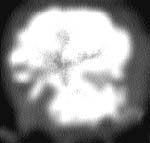After it all began
 what exactly were the conditions moments after the Big Bang - the theory that the universe began with the explosion of dense matter. The answer has eluded scientists for decades. Recently, a pathbreaking experiment involving scientists from 20 countries, including India, recreated the Big Bang and generated a state of matter that existed briefly after the creation of the Universe.
what exactly were the conditions moments after the Big Bang - the theory that the universe began with the explosion of dense matter. The answer has eluded scientists for decades. Recently, a pathbreaking experiment involving scientists from 20 countries, including India, recreated the Big Bang and generated a state of matter that existed briefly after the creation of the Universe.
The experiment, which cost about us $4 billion, is expected to assist scientists understand the origin of the Universe and the state of matter.
The 'Little Bang' - as the experiment was called - is the culmination of a series of seven experiments and was a shortlived fireball that attained temperatures of a million million degrees Celsius - 100,000 times as hot as the centre of the sun.These were the exact conditions that existed 10 microseconds after the formation of the Universe, when temperatures shot up extremely high and energy was very concentrated.
Scientists at Geneva's Cern Laboratories, using the Super Proton Synchrotron, accelerated lead ions to close to the speed of light and smashed them into lead targets. The scientists used lead because the metal is very heavy and a lot of energy is released in the process. This produced a hot mixture in which quarks - the tiniest particles of matter - roamed around freely instead of being bound together as they are in all normal matter.
In theory such a condition could have been created in which quarks and gluons - the massless particles that keep the quarks together - existed freely, in a state known as a quark-gluon plasma. In an extremely short span of time they would have condensed into the normal particles such as protons and neutrons.
"The fireball exists for only the tiniest fraction of a second," David Evans of the University of Birmingham said. "We have to work out what happens by studying the particles that escape from the fireball."
These results are another piece in the jigsaw puzzle, that began with the Greek idea of matter as built of atoms, particles that were once considered indivisible. However, the 20th century brought a change in thinking as the atoms were proved to be divisible and a number of subatomic particles emerged.
The standard model - the theory favoured by physicists today - asserts that all these particles are made up of even more basic particles - quarks- held together by gluons. But till this experiment no machine had been able to isolate a quark.
Related Content
- Order of the National Green Tribunal regarding large scale felling of toddy yielding palm trees in Bihar, 05/06/2025
- Order of the Supreme Court regarding waste management at Adampur landfill site, Bhopal, Madhya Pradesh, 07/04/2025
- World economic situation and prospects 2022
- Malawi economic monitor: addressing macro and gender imbalances
- Assessment of food security among vulnerable groups in Odisha during COVID-19
- Impact of COVID-19 crisis on agriculture: evidence from five Sub-Saharan African countries
